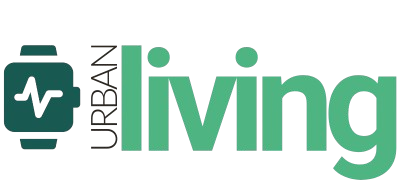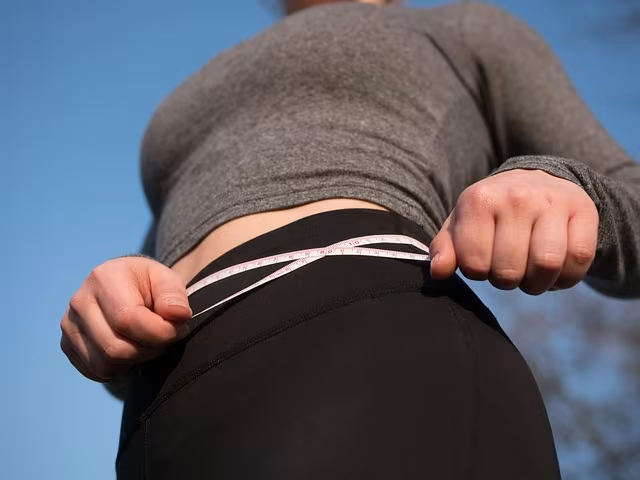Fat transfer, also known as fat grafting, is a surgical procedure that has gained significant popularity in cosmetic and reconstructive surgery.
This innovative technique involves harvesting fat from one area of your body where it exists in abundance and transferring it to another area that requires volume enhancement.
The dual benefit of removing unwanted fat from problem areas while enhancing other areas makes it one of the most requested procedures in plastic surgery practices worldwide.
Related: Non-Invasive Body Contouring Treatments in Singapore
What is Fat Transfer?
Fat grafting is essentially a three-step procedure performed in a single surgical setting. First, fat is harvested through liposuction from donor sites such as the abdomen, thighs, or flanks.
Then, the harvested fat undergoes purification and processing to isolate the viable fat cells. Finally, the purified fat is carefully injected into the recipient areas requiring volume enhancement.
The beauty of this procedure lies in its use of your own body tissue, which significantly reduces the risk of allergic reactions or rejection that might occur with synthetic fillers. Fat transfer provides a natural-looking enhancement while simultaneously contouring areas with excess fat.
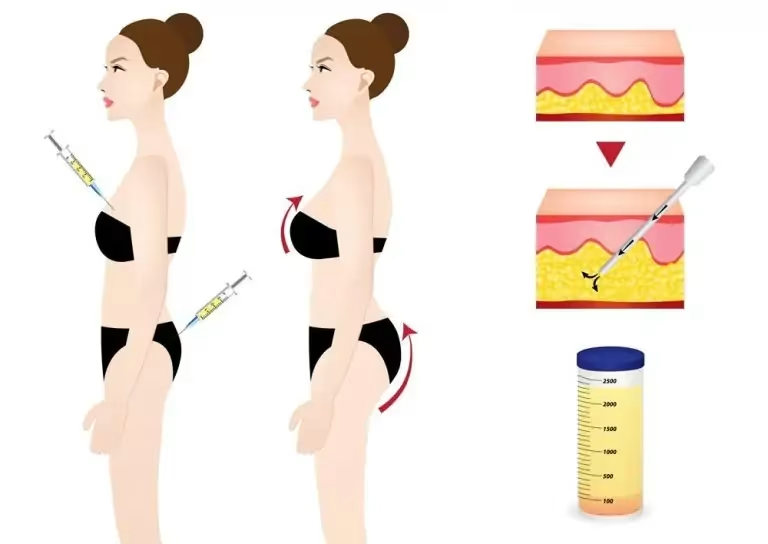
The Science Behind Fat Transfer
When fat is grafted from one location to another, it initially lacks its own blood supply. For long-term survival, the transferred fat must undergo a crucial adaptation period. There are two primary theories explaining how transplanted fat survives:
- Blood Vessel Ingrowth Theory: Similar to skin grafts, fat cells depend on the ingrowth of new blood vessels from the recipient site to provide oxygen and nutrients. This theory suggests that a well-vascularized recipient site leads to better fat survival rates.
- Cell Differentiation Theory: This theory proposes that many transferred fat cells initially die off, but adipocyte-derived mesenchymal stem cells differentiate and grow into new fat cells over time. This explains why certain additives like stromal vascular fraction (SVF) can boost fat survival rates.
Most experts believe both processes occur simultaneously—initial partial fat survival with blood vessel ingrowth, followed by longer-term differentiation of stem cells into new fat cells.
The Fat Transfer Procedure in Detail
Fat Harvesting
The first step involves the collection of fat from donor sites. The choice of donor site depends on the volume of fat required and patient-specific factors:
- For smaller volumes (less than 100cc), fat is typically harvested from the lower abdomen through a tiny 2-3mm opening hidden inside the belly button.
- For larger volumes needed for areas like the breasts or buttocks, a full liposuction procedure may be performed under general anesthesia.
The technique used for harvesting is crucial for fat cell viability. Less traumatic methods result in increased adipocyte viability and graft survival. Options include:
- Vacuum aspiration: Using a liposuction machine
- Syringe aspiration: Manual extraction using syringes
- Surgical excision: Direct removal of fatty tissue
Research indicates that using larger cannulas (6mm vs. 2mm) results in higher graft viability, as smaller instruments tend to cause more cellular damage. The harvesting can be performed via:
- Wet method: Injection of tumescent fluid (Klein’s solution) to facilitate fat removal
- Dry method: Direct harvesting without fluid injection
For delicate areas requiring fine treatment, micro-fat or nano-fat grafts may be harvested using cannulas as small as 0.7mm in diameter.
Fat Processing
After harvesting, the lipoaspirate contains not only adipocytes but also blood, collagen fibers, and debris. Processing this material is necessary to isolate the viable fat cells and eliminate elements that could cause inflammation or accelerate graft degradation.
Common processing methods include:
1. Centrifugation: The Coleman technique involves spinning harvested fat at 3000 rpm for 3 minutes, creating three distinct layers:
- Top layer: Lipids (discarded)
- Middle layer: Viable fatty tissue (used for transfer)
- Bottom layer: Blood, fluid, and anesthetic (discarded)
2. Sedimentation: Allowing gravity to separate the components
3. Filtering: Passing the lipoaspirate through filters
4. Washing: Cleaning the fat with sterile saline solution
Research shows that centrifugation forces greater than 50g can damage the structural integrity of adipose tissue. The Coleman technique remains the gold standard, though modifications exist to improve fat survival rates.
Fat Injection
The final step involves carefully injecting the processed fat into the recipient areas. Several principles guide this process:
- Small-gauge cannulas reduce trauma to the recipient site
- Fat is injected in multiple small-volume aliquots rather than one large bolus
- Multiple tunnels are created using a “fanning-out” pattern
- Fat is typically injected during withdrawal of the cannula
- The distribution is done at varying depths to avoid excessive pressure and overcrowding
The nature of the recipient site determines the choice of cannula size and injection technique. Areas with thin skin, such as the periorbital region or nasal dorsum, require minute fat parcels to avoid nodulation and irregularities.
Types of Fat Transfer
Fat transfer techniques can be categorized based on the volume transferred, recipient site, and processing method:
1. Macro Fat Transfer
This involves the transfer of larger parcels of harvested fat, primarily for volumization purposes. Common applications include:
- Brazilian Butt Lift (BBL)
- Breast augmentation
- Major facial volume restoration
2. Micro Fat Transfer
This more intricate procedure uses smaller volumes of fat for more delicate areas. Applications include:
- Lip augmentation
- Chin enhancement
- Cheek augmentation
- Under-eye correction
3. Nano Fat Transfer
The most delicate type of fat transfer involving highly filtered fat. Used for:
- Skin rejuvenation
- Fine lines treatment
- Crow’s feet correction
- Subtle volumization
Common Applications of Fat Transfer
Facial Rejuvenation
Fat transfer has revolutionized facial rejuvenation by addressing the volume loss that occurs with aging. Key facial areas treated include:
- Under-eye and cheek area: Filling the tear trough and mid-cheek region creates a youthful, full appearance
- Nasolabial folds (laugh lines): Softening these prominent lines
- Forehead and temples: Restoring volume loss that contributes to an aged appearance
- Chin and jawline: Enhancing definition and contour
You might be interested in: Complete Guide to Ellansé Dermal Fillers

Facial fat grafting not only replaces lost volume but also creates a lifting effect as increased volume in key areas takes up skin slack. Additionally, the stem cells in transferred fat often improve skin quality, reducing pigmentation issues and fine wrinkles.
Breast Enhancement
Breast fat transfer has become increasingly popular for:
- Increasing breast volume naturally
- Improving breast shape
- Correcting asymmetry
- Post-breastfeeding enhancement
- Providing a small degree of lifting
Related: The Ultimate Guide to Breast Augmentation in Singapore
Unlike implants, fat transfer offers a more natural feel and avoids foreign body complications. However, patients should understand that:
- The achievable size increase is more modest than with implants
- Multiple sessions may be needed for desired results
- The transferred fat responds to weight fluctuations like natural breast tissue
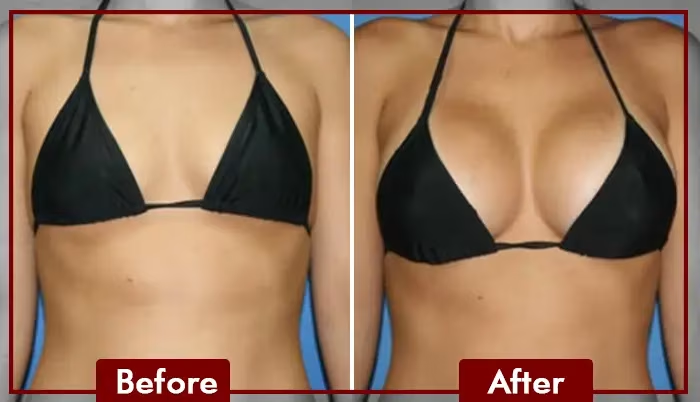
Buttock Augmentation
The “Brazilian Butt Lift” has seen tremendous growth in popularity. This procedure:
- Enhances buttock volume and projection
- Improves overall body contour
- Creates a more rounded, perky appearance
- Provides natural-feeling results
Related: Cellulite Treatment in Singapore: Complete Guide to Effective Solutions
Statistics show that buttock augmentation with fat grafting has increased more rapidly than augmentation with implants, highlighting patient preference for natural-feeling enhancements.
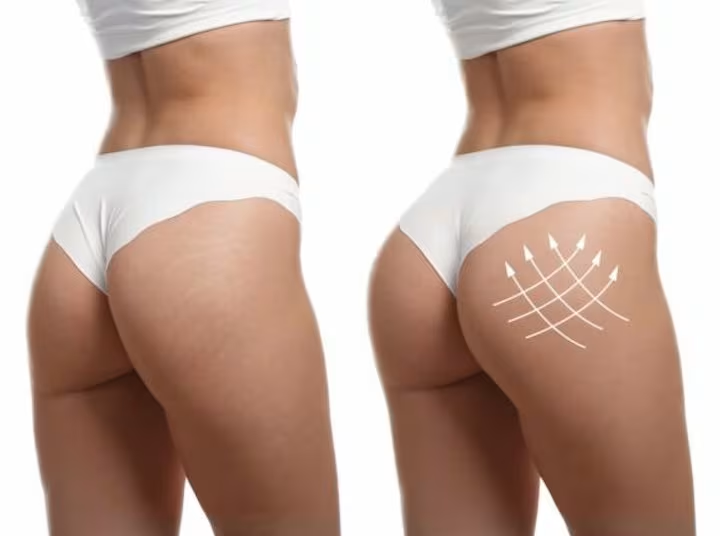
Rejuvenation
As hands lose volume and elasticity with age, developing a “skeletal” appearance with visible veins and tendons, fat transfer can:
- Restore youthful fullness
- Disguise prominent veins and tendons
- Improve skin complexion
- Create a more youthful hand appearance

Corrective Applications
Beyond aesthetic enhancements, fat transfer serves important reconstructive purposes:
- Correcting body defects and asymmetries
- Healing wounds and improving scars
- Reconstructing breast tissue after radiotherapy
- Improving results after breast reconstruction surgery
- Correcting contour deformities from previous surgeries or trauma
Fat Graft Survival and Results
The retention rate of transferred fat typically ranges between 60-70%, though studies show variability from 30-70%. Several factors influence fat survival:
Maximizing Fat Graft Survival
To optimize results, patients should:
- Avoid smoking: Smoking reduces blood supply to the fat graft, significantly affecting survival rates.
- Maintain stable weight: Weight fluctuations can affect the appearance of results.
- Limit strenuous exercise: During the recovery phase, high-intensity workouts should be avoided.
- Avoid pressure on grafted areas: For the first month, avoid tight clothing or sleeping positions that put pressure on treated areas.
- Follow a healthy diet: Nutritional support helps transferred fat cells survive. Avoid low-carbohydrate or intermittent fasting diets for at least one month after surgery.
Surgeons can maximize fat survival by:
- Using atraumatic harvesting techniques
- Properly processing the fat to preserve viable cells
- Injecting in small aliquots rather than large volumes
- Ensuring the recipient site has good vascularity
Recovery After Fat Transfer
Recovery after fat transfer is generally well-tolerated:
- The procedure is typically performed as day surgery
- Pain is usually mild and manageable with oral pain medications
- Compression garments may be required for donor sites for 3-4 weeks
- Most patients can return to work within a week
- Strenuous physical activity should be avoided for approximately one month
The initial appearance after the procedure will not reflect the final result, as some volume loss is expected during the first few weeks as non-viable fat cells are absorbed.
Potential Complications of Fat Transfer
While fat transfer is generally safe, potential complications include:
Donor Site Complications
- Bruising and swelling
- Hematoma formation
- Temporary paresthesia or pain
- Infection (rare)
- Contour irregularities
Recipient Site Complications
- Fat necrosis
- Oil cyst formation
- Calcification (especially in breast fat grafting)
- Reabsorption of grafted fat
- Lumpiness or uneven results
Serious but Rare Complications
- Fat embolism
- Vascular occlusion (particularly with facial injections near blood vessels)
- Visual disturbances or blindness (with injections near the eyes or nose)
To minimize these risks, it’s crucial to choose a qualified and experienced surgeon who is accredited to perform fat transfer procedures.
Choosing a Qualified Surgeon
Not all doctors can perform fat grafting procedures. In Singapore, for example, only doctors accredited by the Ministry of Health can perform these procedures legally. When selecting a surgeon:
- Verify their qualifications and specific training in fat grafting
- Review before-and-after photos of previous patients
- Ensure they have experience with the specific type of fat transfer you’re seeking
- Confirm they have a comprehensive understanding of facial or body anatomy
- Look for surgeons who can demonstrate a variety of successful cases, including corrective procedures
Remember that fat transfer is both a science and an art—a doctor with good aesthetic sense can visualize and deliver results that complement your overall appearance.
Fat Transfer Cost and Insurance Coverage
Fat transfer costs vary based on:
- Surgeon’s fees
- Anesthesia fees
- Facility fees
- Medications and post-operative care
- Geographic location
- Extent of the procedure
Insurance typically covers fat transfer only when performed for reconstructive purposes following trauma or cancer surgery. Purely aesthetic procedures are generally not covered by insurance.
Frequently Asked Questions
How long do fat transfer results last?
Fat transfer provides long-lasting results once the transferred fat cells establish a blood supply, typically after the initial 3-6 month settling period. However, the transferred fat behaves like normal body fat and will respond to weight fluctuations and the natural aging process.
How much fat can be transferred in one session?
This depends on the recipient area and the amount of donor fat available. Small areas like the face may require only 10-20cc, while breast or buttock augmentation might use several hundred cubic centimeters. Your surgeon will assess your specific situation to determine appropriate volumes.
Is fat transfer better than dermal fillers?
For the face, fat transfer often provides more natural-looking and longer-lasting results than temporary dermal fillers. Additionally, fat contains stem cells that can improve skin quality. However, fillers offer predictable, immediate results without surgery or downtime.
Will I need multiple fat transfer sessions?
Many patients achieve satisfactory results after one procedure, but some may require additional sessions to reach their desired outcome, especially if significant volume is needed or if higher-than-average reabsorption occurs.
Can fat transfer help with scarring?
Yes, fat grafting has shown promising results for improving the appearance of scars, especially depressed scars. The stem cells in fat tissue appear to have regenerative properties that can improve skin texture and quality.
Are there any dietary restrictions before or after fat transfer?
Before surgery, patients are encouraged to maintain a healthy diet to ensure adequate fat stores for harvesting. After surgery, avoiding low-carbohydrate diets and intermittent fasting for about a month can help maximize fat survival.
What happens if I gain or lose weight after fat transfer?
Transferred fat behaves like the fat in the rest of your body—it will expand with weight gain and shrink with weight loss. Maintaining a stable weight helps preserve your results.
Can men get fat transfer procedures?
Absolutely. Men commonly seek fat transfer for facial rejuvenation, to correct body contour irregularities, or to address scarring. The principles and techniques are the same, though donor sites may differ.
Is fat transfer safe for all skin types?
Yes, because the procedure uses your own tissue, it’s compatible with all skin types and colors. In fact, fat transfer avoids the hyperpigmentation risks sometimes associated with laser treatments in darker skin tones.
How do I prepare for a fat transfer procedure?
Your surgeon will provide specific instructions, but general preparation includes:
- Maintaining good nutrition to have adequate donor fat
- Avoiding blood-thinning medications and supplements for 1-2 weeks before surgery
- Stopping smoking at least 2-4 weeks before and after the procedure
- Arranging for someone to drive you home after surgery
- Preparing your recovery space with necessary supplies
Conclusion
By understanding the principles, techniques, and expectations of fat transfer, you can make an informed decision about whether this versatile procedure is right for your aesthetic or reconstructive needs. Always consult with a qualified plastic surgeon to discuss your specific situation and goals.
